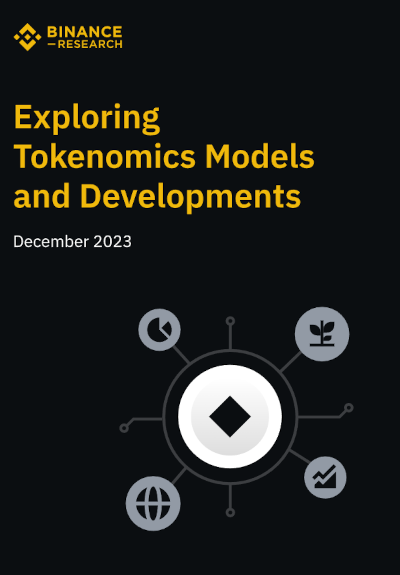Introduction
Welcome to a deep dive into the world of tokenomics, where we explore the intricate design elements that drive the success of crypto projects.
In this blog post, we will unravel the key insights from the report “Exploring Tokenomics Models and Developments” by Binance Research.
Join us on this journey as we uncover the secrets behind sustainable tokenomics and how they shape the future of the blockchain industry.
Challenges of Tokenomics
The crypto landscape is not without its hurdles, from high inflation rates to centralized governance issues.
The challenges of tokenomics in the cryptocurrency industry include:
- High Inflation: Low initial token circulation combined with excessive attention can lead to an overly inflated fully diluted valuation, which may not be sustainable in the long run [T6].
- Low Capital Efficiency: Inefficient allocation of capital resources can hinder the growth and development of projects, impacting their overall success and sustainability.
- Centralized Governance: Projects may face governance issues where decision-making power is concentrated in the hands of a few, leading to potential conflicts of interest and lack of transparency.
- Misuse of Treasury Funds: Improper management and allocation of treasury funds can result in financial mismanagement, reducing the project’s ability to achieve its long-term goals.
- Limited Liquidity: Insufficient liquidity in the token market can restrict trading activities and hinder the token’s value accrual potential.
- Lack of Value Accrual: Without a clear strategy for creating value for token holders, projects may struggle to attract and retain a strong community of users, impacting their long-term sustainability.
Considerations for Tokenomics Design
Token Allocation plays a crucial role in achieving decentralized governance and organic growth. By defining clear purposes for treasury funds and implementing balanced token allocations, projects can align the interests of both the team and token holders. Additionally, a structured Token Vesting Schedule and monitoring Maximum Inflation are essential components to ensure a healthy token ecosystem.
Token Allocation
Defining the distribution of tokens among various stakeholders such as the project team, investors, advisors, treasury, and ecosystem partners is essential for aligning interests and promoting decentralized governance.

Two design considerations for token allocation in tokenomics design are:
- Defining Treasury Fund Purposes and Rules of Use: Clearly outlining the purposes and rules for utilizing the treasury funds helps align the interests of the project team and token holders. This ensures that funds are allocated strategically and transparently to support the project’s growth and development.
- Maintaining a Balanced Token Allocation: Achieving a balanced token allocation is crucial for promoting decentralized governance and fostering organic project growth. By distributing tokens equitably among different stakeholders and purposes, projects can enhance community trust and engagement while avoiding concentration of power in a few hands.
Token Vesting Schedule
Implementing a structured vesting schedule for tokens can help prevent sudden sell-offs and promote long-term commitment from team members and investors.
Maximum Inflation
Maximum inflation in tokenomics refers to the highest rate at which the token’s total supply can increase over a specific period. It is a key metric that influences the token’s price dynamics and overall economic sustainability.
𝑀𝑎𝑥𝑖𝑚𝑢𝑚 𝐼𝑛𝑓𝑙𝑎𝑡𝑖𝑜𝑛 = 𝑀𝑎𝑥𝑖𝑚𝑢𝑚 𝑇𝑜𝑘𝑒𝑛 𝐴𝑚𝑜𝑢𝑛𝑡 𝑡𝑜 𝑏𝑒 𝑈𝑛𝑙𝑜𝑐𝑘𝑒𝑑 ÷ 𝐼𝑛𝑖𝑡𝑖𝑎𝑙 𝐶𝑖𝑟𝑐𝑢𝑙𝑎𝑡𝑖𝑛𝑔 𝑆𝑢𝑝𝑝𝑙𝑦
By setting a maximum inflation rate, projects can control the growth of the token supply, which in turn affects factors such as price stability, market dynamics, and token holder incentives.
Managing maximum inflation is crucial for balancing the need to incentivize stakeholders and support project growth while avoiding excessive dilution of the token’s value. Projects can adjust maximum inflation by tweaking factors such as the initial circulating supply and the allocation to long-term treasury funds. By carefully monitoring and managing maximum inflation, projects can create a healthy token economy that benefits token holders, investors, and the overall ecosystem.
Value Accrual
Focusing on creating real value for token holders through strategic fund allocation, community engagement, and utility-driven initiatives is key to building trust and loyalty within the ecosystem.
By carefully considering these aspects in the tokenomics design process, projects can enhance transparency, governance, and value creation, ultimately driving long-term success and sustainability in the crypto space.
Closing Thoughts
As the crypto industry matures, sustainable tokenomics will become a non-negotiable aspect for investors. Beyond tokenomics design, factors like launching a Minimum Viable Product before Token Generation Events and practicing regular financial reporting are vital for building trust and transparency. By nurturing a real community of users, projects can withstand market fluctuations and pave the way for a stronger crypto ecosystem.
Conclusion
In conclusion, the report sheds light on the critical role of tokenomics in shaping the future of the blockchain industry.
By addressing challenges, implementing best practices in token design, and fostering value accrual, projects can unlock new opportunities for growth and sustainability.
As we look ahead, it is clear that a user-centric approach and a focus on community building will be paramount in driving the success of crypto projects.

Leave a Reply